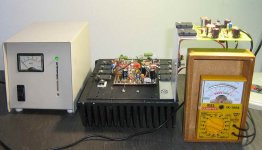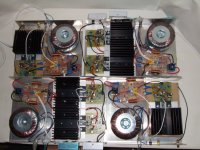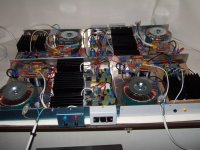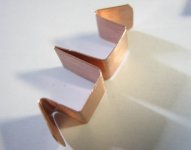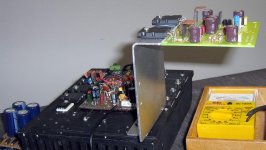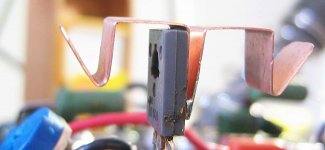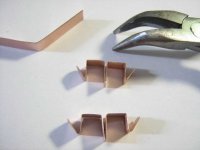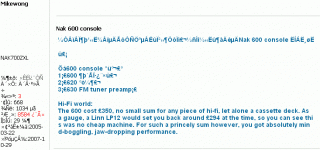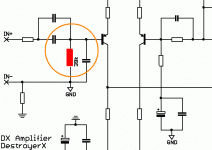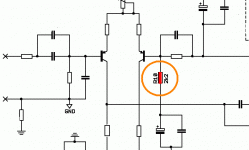Now it is clear.... those things are difficult to understand
We call "barão" (Baron) to someone that is very rich., wealthy man.
Also we call "mala".... and this means traveller package, the place you put your gods inside, cloths, shoes, when you go to travel....luggage may be the name in english... this means "boring guy"... mala is the same object you know... the direct translation...but will never means boring guy...local words.
You see that translations, literally, will never reach the correct meaning.... even in my language.
Chato, the name for a small insect that disturbs a lot... the technical name is Pthirus Pubis..... we use this name to people that is 10 times boring..... people that have this use to go scratching with fingers intimate parts...terrible!... so... 10 times boring... compare someone with this insect is a terrible thing.
Now i see what you mean.
regards,
Carlos
We call "barão" (Baron) to someone that is very rich., wealthy man.
Also we call "mala".... and this means traveller package, the place you put your gods inside, cloths, shoes, when you go to travel....luggage may be the name in english... this means "boring guy"... mala is the same object you know... the direct translation...but will never means boring guy...local words.
You see that translations, literally, will never reach the correct meaning.... even in my language.
Chato, the name for a small insect that disturbs a lot... the technical name is Pthirus Pubis..... we use this name to people that is 10 times boring..... people that have this use to go scratching with fingers intimate parts...terrible!... so... 10 times boring... compare someone with this insect is a terrible thing.
Now i see what you mean.
regards,
Carlos
Attachments
Dx Amplifier will not be ashamed by other amplifier
Sounds good.... very good sounding unit....not ashamed even by High Resolution II ..... also not ashamed by Dx Precision.
Both new models have superior sonics, better dinamics, better Hi end, lower distortion.....but the Standard one remains very good.
I am comparing and i like it...really sound excelent!
Can loose for other amplifiers...yes, it can!....but the distance will never be too much big...as it is already a very good amplifier....reaching the ones that are top performers.
regards,
Carlos
Sounds good.... very good sounding unit....not ashamed even by High Resolution II ..... also not ashamed by Dx Precision.
Both new models have superior sonics, better dinamics, better Hi end, lower distortion.....but the Standard one remains very good.
I am comparing and i like it...really sound excelent!
Can loose for other amplifiers...yes, it can!....but the distance will never be too much big...as it is already a very good amplifier....reaching the ones that are top performers.
regards,
Carlos
Attachments
At long, long last I have my full setup at the point of full functionality. The DX tri-amped certainly out classes my Yamaha AX757SE (also run tri-amped).
Smoother, better base control, more feet tapping, more stable image. All in all a very satisfying result
The new setup does take up a bit more space...
Smoother, better base control, more feet tapping, more stable image. All in all a very satisfying result
The new setup does take up a bit more space...
Attachments
Now i will have more trebles!...ahahahha..the amplifier is higher into the rigth side
of the spectrum....ahahahah.
Nice, huge and dense construction.... i like the way you do those things.... very nice... and with separate supplies, your stereo separation and surround may be excelent, as also sound stage has benefits on that too.
Thank you to show us those images.
Very good to watch them in details...very good.
My last creation was the Space Dragonfly heatsink!... attached image...made using a copper sheet removed from a transformer.
regards,
Carlos
of the spectrum....ahahahah.
Nice, huge and dense construction.... i like the way you do those things.... very nice... and with separate supplies, your stereo separation and surround may be excelent, as also sound stage has benefits on that too.
Thank you to show us those images.
Very good to watch them in details...very good.
My last creation was the Space Dragonfly heatsink!... attached image...made using a copper sheet removed from a transformer.
regards,
Carlos
Attachments
The Dx Standard reproduce an excelent deep bass...maybe not so controled as
High Resolution II or Dx Precision, but extraordinary.
The Thunder sound.... the Storm...... 4 miles distant thunder.... deep.... long.... that sound that you feel scared...... nice.... very nice.
Warm delicious sound..... will never be so good to instruments as High Resolution II or Dx Precision....but is good for our brain and our heart.
The image was during the construction, i used the other heatsink...so... the aluminium is attached down using Down Corning Thermal grease (transparent one).... old Vacuum grease to Video Tape systems... also thermal..... you see...no wires!..and transistor to be correctly fixed, into a tigth way...not this loosen way you see.
regards,
Carlos
High Resolution II or Dx Precision, but extraordinary.
The Thunder sound.... the Storm...... 4 miles distant thunder.... deep.... long.... that sound that you feel scared...... nice.... very nice.
Warm delicious sound..... will never be so good to instruments as High Resolution II or Dx Precision....but is good for our brain and our heart.
The image was during the construction, i used the other heatsink...so... the aluminium is attached down using Down Corning Thermal grease (transparent one).... old Vacuum grease to Video Tape systems... also thermal..... you see...no wires!..and transistor to be correctly fixed, into a tigth way...not this loosen way you see.
regards,
Carlos
Attachments
Well dear Michel... a hell difficult to answer that fratello
Da qualunque punto di vista si afrontti la questione di quale amplificazione sia migliore... per me... Dx amplicattore é perfecto!
Everyone, even having different ideas, face the terrible question... what amplication is the better... for me... the Dx amplifier is perfect as i made it tuned to my own ears, my own taste.
How it will face strange speakers will be an enormous interrogation mark.
Having decent supply.... more than 120 watts RMS can be sent to difficult loads that shows deep points of impedance... also some reactive and inductive loads were tested here.
Having problem... if you perceive the sound "arrested".... "locked" inside the speaker...alike inside a jail...that sound that has power but the power stays there.... enclosured .... that one do not propagates.... then include emitter resistances and output coil and you will be happy.
Can you inform link, or send me pictures and informs about your unit?
panzertoo@yahoo.com
arrivederci fratello,
buona fortuna
Carlos
Da qualunque punto di vista si afrontti la questione di quale amplificazione sia migliore... per me... Dx amplicattore é perfecto!
Everyone, even having different ideas, face the terrible question... what amplication is the better... for me... the Dx amplifier is perfect as i made it tuned to my own ears, my own taste.
How it will face strange speakers will be an enormous interrogation mark.
Having decent supply.... more than 120 watts RMS can be sent to difficult loads that shows deep points of impedance... also some reactive and inductive loads were tested here.
Having problem... if you perceive the sound "arrested".... "locked" inside the speaker...alike inside a jail...that sound that has power but the power stays there.... enclosured .... that one do not propagates.... then include emitter resistances and output coil and you will be happy.
Can you inform link, or send me pictures and informs about your unit?
panzertoo@yahoo.com
arrivederci fratello,
buona fortuna
Carlos
Attachments
Less polar caps (not related to climate change)
Dear Carlos,
I am wondering whether you ever tried to short-circuit the caps C10/C11 in the DXamp, or C14/C15 in HR2.
I am curious of what is the difference in sound.
Even with those caps shorted, output DC offset should not be a problem, I believe.
What do you think?
----------------
konkret
Dear Carlos,
I am wondering whether you ever tried to short-circuit the caps C10/C11 in the DXamp, or C14/C15 in HR2.
I am curious of what is the difference in sound.
Even with those caps shorted, output DC offset should not be a problem, I believe.
What do you think?
----------------
konkret
Something near 10K dear Nordic.... do not worry.... will not load your pre amplifier
The maximum effect may be some small loss of driver voltage because of lower impedance amplifier input.
regards,
Carlos
...................................................................................................
Dear KonKret
Within certain limits, the Dx amplifier was made not to shock people too much.... it is a politically correct amplifier too.... and people use to see those condensers and capacitors there.... if we remove them... a lot of folks will ask for them..will be shocked asking
- "Were are those condensers?"
Also.... many folks will not construct "too much exotic circuits"... they do not want to enter a "new experimentation" when they will be the ones will be experimented... working to construct something that can be a time bomb.
Without those condensers...some folks would never construct.... they will say...or think with themselves:
- "I will not construct that crazy amplifier with feedback gain condenser missed!"
So..it is there.
Versteht?
regards,
Carlos
The maximum effect may be some small loss of driver voltage because of lower impedance amplifier input.
regards,
Carlos
...................................................................................................
Dear KonKret
Within certain limits, the Dx amplifier was made not to shock people too much.... it is a politically correct amplifier too.... and people use to see those condensers and capacitors there.... if we remove them... a lot of folks will ask for them..will be shocked asking
- "Were are those condensers?"
Also.... many folks will not construct "too much exotic circuits"... they do not want to enter a "new experimentation" when they will be the ones will be experimented... working to construct something that can be a time bomb.
Without those condensers...some folks would never construct.... they will say...or think with themselves:
- "I will not construct that crazy amplifier with feedback gain condenser missed!"
So..it is there.
Versteht?
regards,
Carlos
Well.... my theoricall friends do not arrive when really needed.
Because of that i will try to help you.... but i am not the better person to talk about theories.
Impedance:
It is a resistance, but measured under the main operational frequency, for audio, this frequency is 1 Kilohertz.
It is the resistance the source can see, perceive, feel.... imagine the audio source equipment that can sense the loading characteristics of the unit it will be connected to....the audio source equipment will feel, will sense, will understand and will have the consequence effects from the input amplifier impedance.
Very complicated... in the real world, daily use, we inspect the main input resistance.... the one from the differential base to ground... this will be the main impedance (resistance when you cross the unit with 1 Kilohertz signal of audio... resistance to Alternated currents and alternated voltages) of this first resistance.
Audio will cross the input resistance, normally very small...will cross the condensers that have the reactance capacitive, wich is the impedance...or resistance to audio frequencies...also very small and the main resistance to the flow of currents to ground will be the input resistance.
Transistors, emitter, degenerations...all those things plays a good part into the game...but... the result of the calculations are normally not too much different from the input resistance.
Because of that.... Dx Standard has something around 39K of input impedance.
The High Resolution II show impedance that may be around 10K.
Impedance, beeing matched allow the perfect transference of audio from one stage to the other.
Not matched, transference will happens with some losses or some overloads.
A low impedance source of audio will transfer audio without problems to higher impedance output....but the opposite is not the same.... a high impedance when connected to a lower input amplifier impedance, will be loaded, and will loose amplitude of voltage.
If you have an audio source, able, capable, with energy enougth to produce 2 volt over 100K ohms.... you see... a very small power... as power is voltage squared (2 volt multiplied by 2 volts that will result into 4 volts) divided by the load resistance (or impedance, because we are talking about audio)...this results into
4/100000= 40 microwatts of power
You see... into higher impedances...the power is small.
Now connect this source into an 100 ohms input amplifier (let's imagine that crazy one).
The same 40 microwatts of power...when over 100 ohms..will result in a voltage (voltage will fell down when loaded... will be reduced).... when you plug this signal source into 100 ohms load (the input impedance load...the power amplifier input impedance)...the signal will be reduced to 60 milivolts!.... to keep the same power.
If you do the opposite.... having power....you will not loose voltage...so.... low impedance can be connected to high impedance.
My informations, born into practice world..doing, and learning while doing things...they are not precise.... good when the "mobile encyclopedia" guys arrive when needed... but this do not happens always...more common to arrive when not needed..ahahahahah.
regards,
Carlos
Because of that i will try to help you.... but i am not the better person to talk about theories.
Impedance:
It is a resistance, but measured under the main operational frequency, for audio, this frequency is 1 Kilohertz.
It is the resistance the source can see, perceive, feel.... imagine the audio source equipment that can sense the loading characteristics of the unit it will be connected to....the audio source equipment will feel, will sense, will understand and will have the consequence effects from the input amplifier impedance.
Very complicated... in the real world, daily use, we inspect the main input resistance.... the one from the differential base to ground... this will be the main impedance (resistance when you cross the unit with 1 Kilohertz signal of audio... resistance to Alternated currents and alternated voltages) of this first resistance.
Audio will cross the input resistance, normally very small...will cross the condensers that have the reactance capacitive, wich is the impedance...or resistance to audio frequencies...also very small and the main resistance to the flow of currents to ground will be the input resistance.
Transistors, emitter, degenerations...all those things plays a good part into the game...but... the result of the calculations are normally not too much different from the input resistance.
Because of that.... Dx Standard has something around 39K of input impedance.
The High Resolution II show impedance that may be around 10K.
Impedance, beeing matched allow the perfect transference of audio from one stage to the other.
Not matched, transference will happens with some losses or some overloads.
A low impedance source of audio will transfer audio without problems to higher impedance output....but the opposite is not the same.... a high impedance when connected to a lower input amplifier impedance, will be loaded, and will loose amplitude of voltage.
If you have an audio source, able, capable, with energy enougth to produce 2 volt over 100K ohms.... you see... a very small power... as power is voltage squared (2 volt multiplied by 2 volts that will result into 4 volts) divided by the load resistance (or impedance, because we are talking about audio)...this results into
4/100000= 40 microwatts of power
You see... into higher impedances...the power is small.
Now connect this source into an 100 ohms input amplifier (let's imagine that crazy one).
The same 40 microwatts of power...when over 100 ohms..will result in a voltage (voltage will fell down when loaded... will be reduced).... when you plug this signal source into 100 ohms load (the input impedance load...the power amplifier input impedance)...the signal will be reduced to 60 milivolts!.... to keep the same power.
If you do the opposite.... having power....you will not loose voltage...so.... low impedance can be connected to high impedance.
My informations, born into practice world..doing, and learning while doing things...they are not precise.... good when the "mobile encyclopedia" guys arrive when needed... but this do not happens always...more common to arrive when not needed..ahahahahah.
regards,
Carlos
Attachments
Sensitivitiy of Dx units were adjusted to my personal needs, that allow me to compare
with other Dx units... as i am always trying... and when they are almost the same in sensitivity i can compare without be fooled by the one plays louder...we feel the louder one as the better one..and this is not the real thing.
The Dx standard amplifier is around 750 milivolts of audio (RMS) to full output.... the High Resolution II is a little bit more hard to move...the sensitivity was reduced sligtly because people asked that.
Those sensitivities are not very good to now a days audio sources.... so...you can adjust the way i will explain you.... i suppose you will need to reduce sensitivity in the place to increase it..... the first suggestion you will read now, is for the inverted sittuation..when your audio source is not enougth... when full volume into the audio source is not driving the amplifier to its full power.
- Find a steady signal, a recorded generator signal into CD, or select some music you have a very loud audio and inject to the amplifier full volume...audio source adjusted to maximum.
Now adjust this resistance using a trimpot installed into the fixed resistance place.... pré adjust this trimpot to the value suggested into the schematic..... now decrease the resistance value to increase the gain tilll you reach distortion.... ready!.
Remove the trimpot, measure the value and substitute it by a fixed resistance ...or a series of resistances...or a parallel combination of fixed resistances that matches your need and solder into the original resistance place.... finished!
If your signal is overdriving the power amplifier....so....it is a moment not to reduce resistance.... increase it till you have the distortion finishing...going to reproduce clear audio... let this small distortion there...this is room enougth when you will play lower volume audio...you will need this sensitivity when playing lower level audio..
Reduce resistance to increase sensitivity
Increase resistance to reduce sensitivity
regards,
Carlos
with other Dx units... as i am always trying... and when they are almost the same in sensitivity i can compare without be fooled by the one plays louder...we feel the louder one as the better one..and this is not the real thing.
The Dx standard amplifier is around 750 milivolts of audio (RMS) to full output.... the High Resolution II is a little bit more hard to move...the sensitivity was reduced sligtly because people asked that.
Those sensitivities are not very good to now a days audio sources.... so...you can adjust the way i will explain you.... i suppose you will need to reduce sensitivity in the place to increase it..... the first suggestion you will read now, is for the inverted sittuation..when your audio source is not enougth... when full volume into the audio source is not driving the amplifier to its full power.
- Find a steady signal, a recorded generator signal into CD, or select some music you have a very loud audio and inject to the amplifier full volume...audio source adjusted to maximum.
Now adjust this resistance using a trimpot installed into the fixed resistance place.... pré adjust this trimpot to the value suggested into the schematic..... now decrease the resistance value to increase the gain tilll you reach distortion.... ready!.
Remove the trimpot, measure the value and substitute it by a fixed resistance ...or a series of resistances...or a parallel combination of fixed resistances that matches your need and solder into the original resistance place.... finished!
If your signal is overdriving the power amplifier....so....it is a moment not to reduce resistance.... increase it till you have the distortion finishing...going to reproduce clear audio... let this small distortion there...this is room enougth when you will play lower volume audio...you will need this sensitivity when playing lower level audio..
Reduce resistance to increase sensitivity
Increase resistance to reduce sensitivity
regards,
Carlos
Attachments
Input capacitor, how to select a good value for it
There's a very simple formula, to common emitter, single stage amplifier that can be usefull....not precise, but can give us an idea of the input capacitor size....if not good enougth, will be a nice reference, a good starting point.
The formula is:
1/ (3.2.F.R)
One, divided by 3.2 multiplied by the lower frequency you want to be used and multiplied by the input resistance to ground.
Into the Dx standard you can have the 10 hertz operation choice and the input resistance is 39000 ohms (39K)
So... the input condenser has to be equal, or larger than 0.8uF...or 800n
The result is in farads
.......................................................................................................
For the High Resolution II, as the input resistance is 10000 ohms (10K), the needed input capacitor can be equal, or bigger than 3uF to operate into 10 hertz minimum.
For the Dx Precision, as the input capacitor is 15000 ohms, the needed input capacitor can be equal, or bigger than 2uF
.......................................................................................................
All those things are matter of personal decision...it is up to you to modify to your preferences and needs.... calculation (reference only) was made to 10 Hertz...you can choice 20 hertz, or even 1 cicle per second...it is up to you.
I want to let those things clear...i am not a living encyclopedia..all i know is reading the forum , doing things into real life and reading the web informations.... those things can be not precise, not entirelly correct..some differences may exist when those things goes calculated by PHD personnel with high Mathematics levels of calculations..... but.... those things i use.... they work too...at least as reference.
If you wanna really know...wanna know?
I do not give a sheet.... a sheet of papper to be spent calculating those things... i do tests real life replacing condensers... this is the way i find the one is better.
regards,
Carlos
There's a very simple formula, to common emitter, single stage amplifier that can be usefull....not precise, but can give us an idea of the input capacitor size....if not good enougth, will be a nice reference, a good starting point.
The formula is:
1/ (3.2.F.R)
One, divided by 3.2 multiplied by the lower frequency you want to be used and multiplied by the input resistance to ground.
Into the Dx standard you can have the 10 hertz operation choice and the input resistance is 39000 ohms (39K)
So... the input condenser has to be equal, or larger than 0.8uF...or 800n
The result is in farads
.......................................................................................................
For the High Resolution II, as the input resistance is 10000 ohms (10K), the needed input capacitor can be equal, or bigger than 3uF to operate into 10 hertz minimum.
For the Dx Precision, as the input capacitor is 15000 ohms, the needed input capacitor can be equal, or bigger than 2uF
.......................................................................................................
All those things are matter of personal decision...it is up to you to modify to your preferences and needs.... calculation (reference only) was made to 10 Hertz...you can choice 20 hertz, or even 1 cicle per second...it is up to you.
I want to let those things clear...i am not a living encyclopedia..all i know is reading the forum , doing things into real life and reading the web informations.... those things can be not precise, not entirelly correct..some differences may exist when those things goes calculated by PHD personnel with high Mathematics levels of calculations..... but.... those things i use.... they work too...at least as reference.
If you wanna really know...wanna know?
I do not give a sheet.... a sheet of papper to be spent calculating those things... i do tests real life replacing condensers... this is the way i find the one is better.
regards,
Carlos
- Status
- Not open for further replies.
- Home
- Amplifiers
- Solid State
- Destroyer x Amplifier...Dx amp...my amplifier

